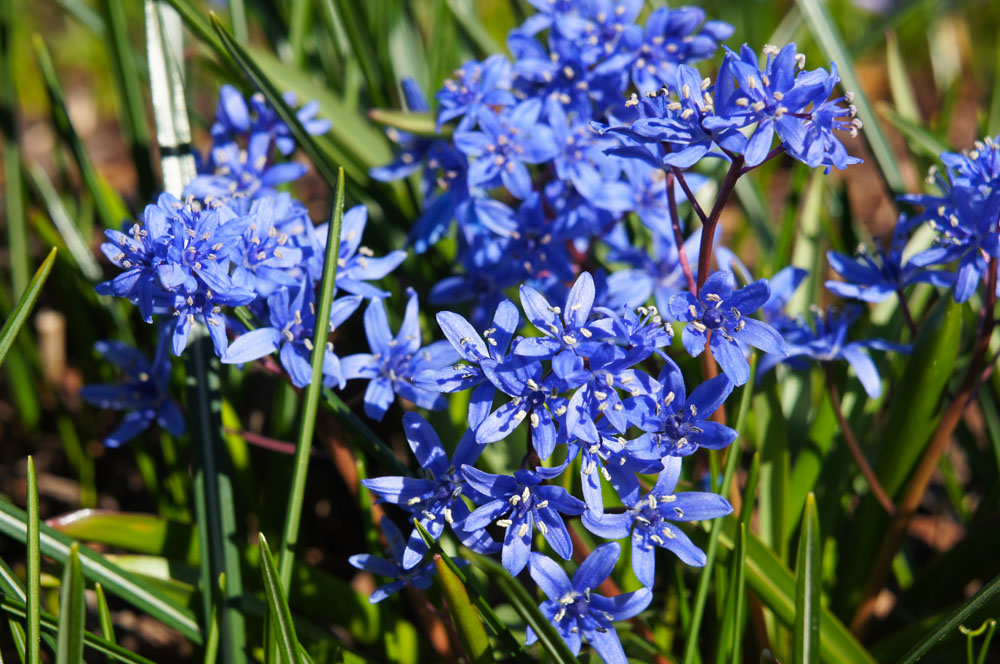Description
Scilla – Squill – Bluebell –
There are 90 bulbous perennials in the Hyacinthaceae family, in this genus. They are found naturally occurring in subalpine meadows, rocky slopes, woodlands, and sea shores in Europe, Africa, and Asia. They are grown for their terminal racemes or corymbs of small usually blue but also pink, purple, or white, bell shaped to flat, or star shaped, flowers borne in spring, but some are autumn flowering. Most have semi erect, strap shaped, sometimes channeled, basal leaves. Naturalize under trees and shrubs or in grass.
Plant bulbs 3-4″ deep in autumn. In moderately fertile, humus rich, well drained soil, in full sun or light shade.
Prone to viruses.
S. bifolia – This small, bulbous perennial from Central and Southern Europe and Turkey grows 3-6″ tall and 2″ wide. It produces 2 semi erect, basal, narrow, dark green leaves, that widen towards the tips, that reach 2-8″ long borne in spring with the flowers. The flowers are held in one sided spikes of up to 20 star shaped, blue to purple blue flowers, up to 1 ½” across. Excellent for naturalizing.
Zones 3-8





